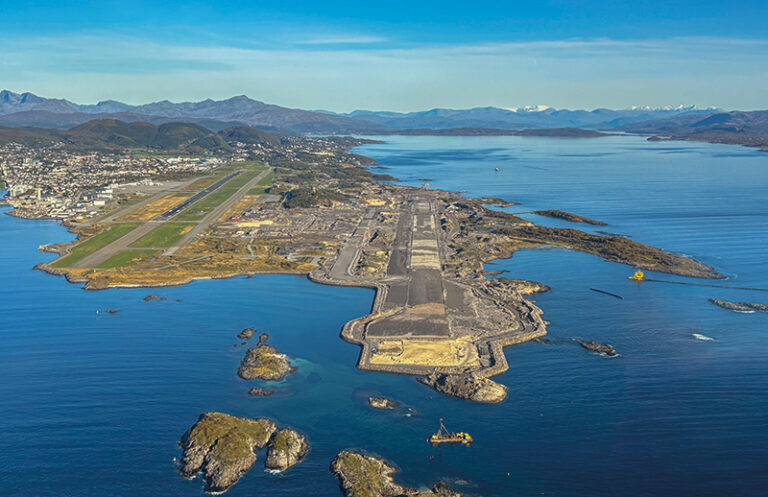Few careers reflect the intersection of law, politics, and infrastructure as completely as that of Tim Murphy. Over four decades, Murphy has built a résumé that spans Ontario and federal politics, and the boardrooms of some of the most influential companies involved in Canada’s construction and infrastructure industry. Today, as an executive at Aecon, the former chair of the Windsor-Detroit Bridge Authority (WDBA), remains a key voice in how Canada conceives, finances, and delivers major public projects.
From the legislature to law
Murphy’s path into public life was anything but linear. After graduating from Queen’s University, he entered Queen’s Park as a legislative intern in 1982-83—a formative experience that set him on a trajectory toward politics and policy. “I worked for a Conservative and a New Democrat and ended up a Liberal,” he jokes, describing an early immersion in political partisanship that would later serve him well.
When the Liberals formed government in 1985, Murphy joined Sean Conway, Ontario’s Minister of Education, as a staffer—taking a year off from University of Toronto law school to do so. He returned to complete his law degree but continued working part-time for then-Attorney General Ian Scott. By the early 1990s, Murphy was balancing legal practice with campaign management, helping to run leadership and election efforts for both federal and provincial Liberals. “I’d take my holidays to run campaigns,” he recalls. “It was a bit of a juggling act.”
In 1993, Murphy was elected as an Ontario MPP, representing St. George-St. David, the same riding where he had once volunteered. Though his time at Queen’s Park was brief—he lost his seat in the 1995 election that saw Mike Harris’ PCs swept into power—it gave him first-hand experience in the political trenches and a network that would prove invaluable later. Afterward, he returned to private practice, joining McCarthy Tétrault as a litigator. There, his portfolio began to expand beyond politics and into the world of construction law, a field that would ultimately define his career.
“One of my first clients in that space was a predecessor company to Aecon,” Murphy recalls. “They were involved in a lawsuit at Terminal 3 at Pearson, and that really started my connection to construction and infrastructure.”
In the eye of the storm
In 2001, Paul Martin—Jean Chrétien’s Minister of Finance—recruited Murphy to join him as a senior political advisor. That relationship would propel Murphy into the heart of Canadian government, when he was appointed Martin’s chief of staff when Martin succeeded Chrétien as Prime Minister.
Murphy’s first day on the job working for Martin was September 11, 2001.
“It was quite a day,” he says, understatedly. “You arrive trying to figure out where the washroom is—and instead you’re helping stabilize the global financial system.”
The experience was both intense and transformative. “The skill set of senior political staff is phenomenal,” Murphy reflects. “Everything comes at you at a furious pace. You have to be ruthlessly focused on why you’re there, cut through the noise, and organize people toward a goal—without panicking.”
The aftermath of 9/11 demanded quick decisions on everything from airport security to cross-border trade and national budgeting. “We basically did a national budget from zero in eight weeks,” Murphy recalls. “Normally that takes a year.” The crisis required rebuilding institutions—growing the border service, shoring up the economy, and coordinating with Washington—all under constant pressure. “It was an amazing learning experience,” he says, “and it taught me lessons in project management that I still use today.”
Discovering P3s
With the end of the Liberals 12-year run in the 2006 federal election, Murphy returned to private practice, determined to channel his political experience into something constructive. “I was tired of fighting about things,” he admits. “And what was emerging at that time was the P3 model—a mix of public and private that drew on my background in construction and government. It was a space where I could actually build things.”
He joined McMillan LLP, where he helped establish one of Canada’s first legal practices devoted to public-private partnerships. Because the field was so new, few had formal expertise. “It was a world where it was better to be lucky than good,” he laughs. “I arrived just as it was expanding.”
Murphy also moved quickly to cement his credentials, publishing academic work on the P3 model and proposing a course on it to the University of Toronto Faculty of Law. “They said, ‘Good idea,’” he recalls. “So, I became an adjunct professor in P3s before I’d even done one.” Soon enough, he was advising on major projects and authoring key texts, including Construction Law in Canada (co-authored with Justice Len Ricchetti) and Public-Private Partnerships in Canada (2019), the first Canadian-authored book devoted entirely to the field.
Murphy’s career has given him a unique vantage point to view how the Canadian P3 sector has grown and matured. The early 2000s, he notes, were about experimentation—simple build-finance projects, particularly in hospitals, where the province could test the concept with minimal risk. “It was almost like training wheels,” he says. “Everyone was learning—governments, contractors, lenders.”
The model’s success led to rapid expansion. “Suddenly projects were actually finishing on time and on budget,” Murphy recalls. “So, governments started giving more and more to Infrastructure Ontario.” But as projects grew more complex—particularly in the transit and healthcare sectors—the old risk-transfer formulas came under pressure. “You can’t just dump all the risk on the private sector,” he says. “It worked when it was a square building on a square lot. It doesn’t work when you’re tunnelling through a city full of unknown utilities.”
This realization has pushed the industry toward new models such as progressive design-build and alliance contracting, which emphasize collaboration over confrontation. “Early contractor involvement is good for everyone,” Murphy argues. “It keeps prices realistic and prevents the kind of disputes that drove some major players out of the space.”
He points to the fragmentation of large transit projects as another positive trend. “Breaking up megaprojects allows more competition and reduces integration risk,” he says. “It’s a way to keep the price down while getting the best expertise for each part.”
The next era of nation-building
Looking ahead, Murphy sees a complex but promising landscape for Canadian infrastructure delivery. “P3s were never meant to be the only model,” he stresses. “At their peak, they were maybe 18 per cent of Ontario’s total infrastructure program. The real question is always: what’s the right model for the asset you’re building?”
One of the biggest evolutions, he believes, will be around Indigenous equity participation in infrastructure—particularly in projects tied to critical minerals, defense, and trade. “To get social license, you need partnership,” he says. “Providing equity to Indigenous communities isn’t just the right thing to do—it’s good business.”
That shift may also revive certain P3 variants, especially those with clear revenue streams, as opposed to the “availability payment” model that has dominated Canada’s market. “Debt lowers the cost of capital,” says Murphy. “If you can design a project with predictable revenues—like rail or energy transmission—then lenders can play a constructive role again.”
He is quick to note, however, that flexibility and expertise are paramount. “You need governments willing to be adaptable, and you need people who can evaluate complex risk and value-for-money equations project by project and that’s not easy. The private sector attracts a lot of the talent, so governments have to be smart about building and retaining their own.”
With Canada entering a period of heavy public investment he sees both opportunity and challenges ahead. “There’s going to be a lot of work. The challenge will be having enough skilled labour and enough project management capacity to deliver it.”
Re-setting the Gordie Howe Bridge
Murphy’s belief in partnership over position was put to the test during his tenure as chair of the Windsor-Detroit Bridge Authority, which oversees construction of the Gordie Howe International Bridge—one of the largest federal infrastructure projects in Canadian history.
When he joined the board, the project was struggling. COVID-19 had upended supply chains, costs were escalating, and trust between the public agency and its private consortium had deteriorated. “It had a public and a private, but no partnership,” Murphy says. “Everyone was focused on the contract, not the project.”
His approach was to “put the partnership back in public-private partnership.” That meant re-establishing trust, negotiating new timelines and budgets, and refocusing all sides on a shared goal. “You can’t just sit there saying, ‘Clause 7A says this is your problem.’” That’s how projects die.”
The reset worked. The bridge is now nearing completion, scheduled to open for traffic in late 2025. “When both sides walk away slightly unhappy, it usually means the deal was fair,” Murphy says wryly. “It’s going to be a significant piece of public infrastructure, and I’m proud to have played a part.”
His connection to the project, he admits, runs deep. “The irony is, I was originally a lawyer for the losing bidder,” he laughs. “Then I was hired as a facilitator to improve relations between the parties, then appointed chair of the authority, and now I work for Aecon, which is part of the private consortium. The bridge haunts me—but in a good way.”
Infrastructure as a calling
Murphy’s move to Aecon in 2024 brought his career full circle—back to the industry that first linked his legal, political, and policy interests. “It’s a great company, and a great sector,” he says. “We never seem to have enough infrastructure in this country, and once again it’s an area people want to invest time and money in.”
His philosophy of leadership, forged in both politics and project delivery, remains grounded in pragmatism and collaboration. “Whether you’re in government, law, or construction, the principle is the same,” he says. “You look down at the piece of paper, but you also look up at the horizon. You can’t just react—you have to lead.”
John Tenpenny is the Editor of ReNew Canada.
[This article appeared in the November/December 2025 issue of ReNew Canada.]
Featured image: (Aecon)












